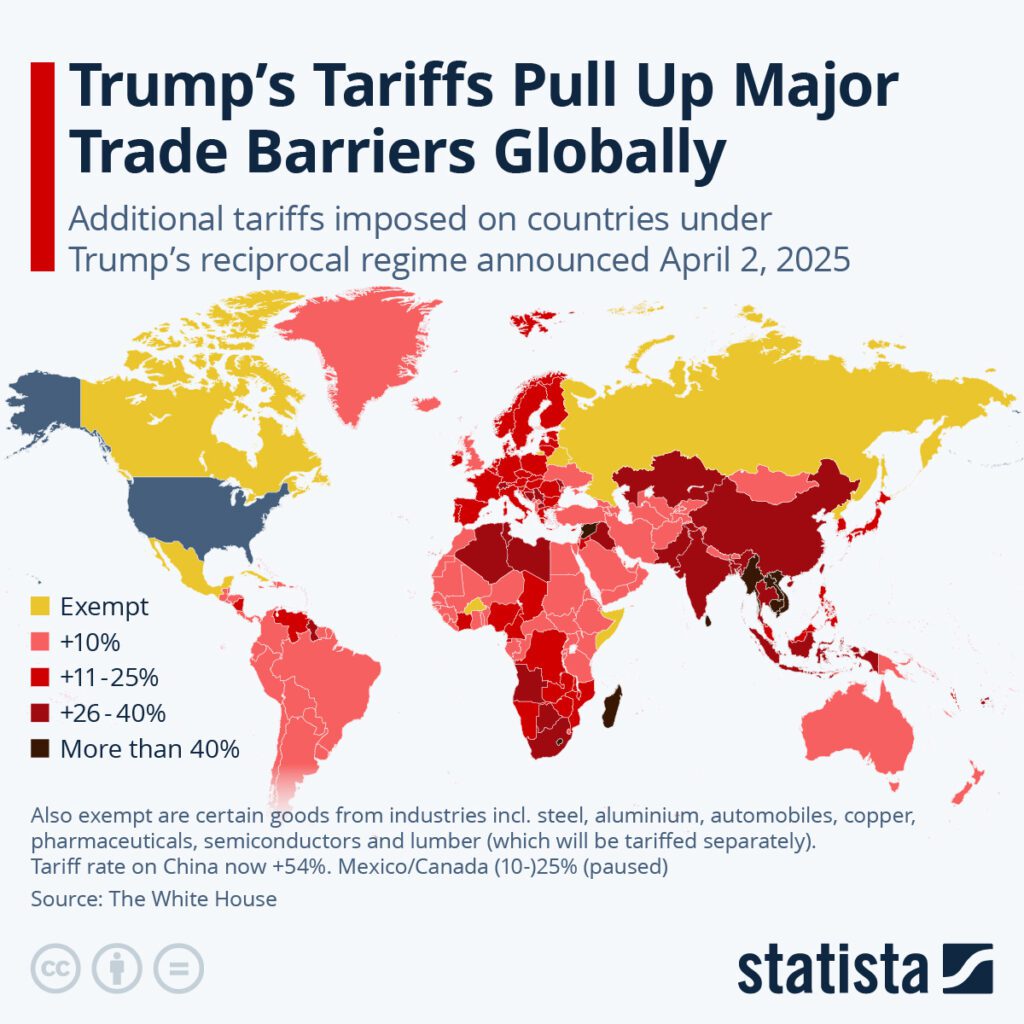Tariffs, Turbulence, And Procurement: What Trump’s New Trade War Means For You

Sarah Drakard · Head Of Operations, Canopy
5 min read · 11 Apr, 2025

Photo by The White House
You’ve likely seen the headlines—President Trump, back in the Oval Office, has reimposed sweeping tariffs on foreign goods, a move that sent tremors through global markets. But in a surprise twist, he’s now announced a 90-day pause on those tariffs, citing a desire to give U.S. allies and trade partners “room to adapt” (White House, 2025).
So what does this temporary reprieve mean for procurement teams—especially across the UK, where businesses are already juggling inflation, Brexit fallout, and supplier churn?
Let’s break it down. In this article, we’ll examine the implications of the pause, why uncertainty is still the biggest risk, and how procurement leaders can use this window to build resilience, not just relief.
What’s Actually Happening?
In early April 2025, Trump declared a national economic emergency and announced sweeping protectionist measures—including a 10% blanket tariff on all imported goods. But less than three weeks later, following pressure from industry leaders and international partners, his administration issued a 90-day suspension of those tariffs.
This pause doesn’t undo the tariffs. It simply delays them. And for many procurement teams, that introduces a different kind of stress: strategic limbo.
Companies that export to the U.S., or rely on American-made parts, are left wondering whether to react now or wait for clarity. Some suppliers are holding off on repricing. Others are preemptively raising costs, fearing retroactive enforcement. And logistics providers are still preparing for tightened customs procedures.
As The Economist put it, “tariff uncertainty can be as ruinous as tariffs themselves” (The Economist, 2025).

What This Means for Procurement Teams
Let’s be clear: this isn’t a return to normal. It’s a signal that trade volatility is here to stay—and that procurement strategy must adapt accordingly.
1. Uncertainty = Hidden Costs
Even paused tariffs affect pricing. Suppliers may build in risk premiums. Shipping partners might adjust schedules. Internal teams might waste hours scenario-planning for outcomes that never materialise. These are costs, even if they’re hard to quantify.
That’s why procurement leaders need faster access to real-time data and scenario modelling tools. According to McKinsey, more than 70% of supply chain executives now expect major disruptions at least once every 2 years (McKinsey, 2023).
2. The Supply Chain Domino Effect
It’s not enough to know your tier-one supplier. You need visibility into their tier-two and tier-three partners—especially if they rely on U.S. materials or sell into American markets.
For instance, a UK firm buying printed cartons from Italy may not realise that the ink comes from a U.S. chemical provider. If that component becomes tariffed—or perceived as risky—it cascades back to your pricing and lead times.
3. Optionality Is a Competitive Advantage
This 90-day pause offers a unique opportunity: time to build redundancy. If you’ve been meaning to qualify a second supplier or diversify your sourcing regions, now is the moment.
Don’t confuse the pause for stability. Use it to run onboarding drills, test alternate logistics routes, and explore reshoring or nearshoring options.
How Should UK Procurement Leaders Respond?
Instead of reactive cuts or rushed contract changes, focus on resilience. Here’s how:
Reassess Risk Hotspots
Map your supplier portfolio against regions potentially affected by delayed or reinstated tariffs. Prioritise those relationships for contingency planning.
Improve Data Hygiene
Most businesses still lack consistent supplier records. If you don’t know who’s in your chain, you can’t model risk. Take this time to clean, consolidate, and enrich your supplier data.
Align with Finance and Legal
This is a cross-functional issue. Bring finance into forecasting. Work with legal to review renegotiation triggers. Ensure that force majeure clauses or pricing escalators reflect today’s realities.
Talk to Suppliers
Ask them how they’re modelling the tariff delay. Are they expecting retroactive duties? Are they planning price changes? Their plans directly affect yours.
Final Thoughts: The Pause Before the Storm?
This 90-day tariff delay shouldn’t be mistaken for a resolution. It’s a warning shot—and an opportunity. If your procurement team uses this time to build visibility, agility, and optionality, you’ll be better prepared for whatever comes in July.
As Investor’s Business Daily notes, the last round of tariffs led to stock market volatility and sudden supply chain shifts across aerospace, automotive, and electronics (IBD, 2025). This time may be no different.
At Canopy, we help procurement teams prepare for uncertainty—not just react to it. If you’re navigating supplier risk in a volatile trade landscape, we’d love to talk.
Sources & Further Reading:
Supplier Management Insights
5 Signs Spreadsheets Are Slowing Down Your Procurement Team
5 Signs Spreadsheets Are Slowing Down Your Procurement Team Sarah Drakard · Head Of Operations,…
Can SMEs Finally Compete in Procurement? A New Opportunity Emerges
Can SMEs Finally Compete in Procurement? A New Opportunity Emerges Sarah Drakard · Head Of…


